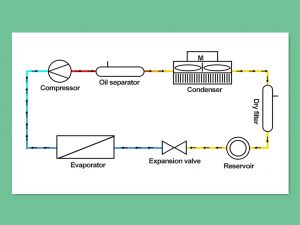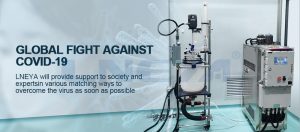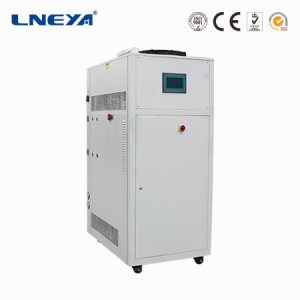The Phenomenon of Ice Jam in Low Temperature Chiller System
The phenomenon of ice jam in low temperature chiller system is mainly due to the excessive water in the refrigeration system. With the continuous circulation of refrigerants, the water in the refrigeration system gradually concentrates at the outlet of expansion valve. Because the outlet of expansion valve has the lowest temperature, the water turns into ice and the ice enlarges gradually. To a certain extent, the expansion valve will be completely blocked, resulting that the refrigerant can not be recycled, and the cold storage will not refrigerate.
The phenomenon of ice jam in low temperature Kältesystem is normal in the initial stage. There is frost in the evaporator, heat dissipation of the condenser, stable operation of the unit, clear and stable movement of refrigerant in the evaporator. With the formation of ice jam, the air flow is gradually weakened and intermittent. When the jam becomes serious, the sound of air flow completely disappears. The refrigerant cycle is interrupted. And the condenser is gradually cooled.
Because of the blockage, the exhaust pressure rises. The sound of the machine increases. There is no refrigerant flowing into the evaporator. The frost area decreases gradually. The temperature increases gradually, and the temperature of the expansion valve rises together, so the ice begins to melt. At this time, the refrigerant begins to recycle again. After a period of time, ice blockage occurs again, forming a periodic phenomenon of through-blockage.
Troubleshooting of Ice Block
The ice jam failure of low temperature chiller system is due to excessive moisture in the system, so the whole refrigeration system must be dried. There are two ways to deal with it:
1. Heat and dry the components of the refrigerant system in a drying box. Remove the compressor, condenser, evaporator, expansion valve and return pipe in the refrigerant system from the cold storage and put them into the drying box for heating and drying.
2. Remove the water content of each part of the refrigeration system by heating and secondary vacuum extraction.
Verwandte Empfehlungen
-
Troubleshoot the main points of failure of the high and low temperature cooling system
1866When the industrial high and low temperature cooling system is in use, what is the general reason if the temperature cannot drop down? How should we deal with such failures? Let's first analyze the principles and methods of industrial cooling. The...
Details anzeigen -
Cooling method for semiconductor testing chiller to meet temperature control requirements
2017The biopharmaceutical field requires high-precision temperature to control the activity of enzymes and the production of products; the chemical industry field requires specific temperatures to stabilize chemical reactions; the electronic manufact...
Details anzeigen -
16. - 18. Juni 2020 | The Automotive Testing Expo Europe-LNEYA
2288Die Automotive Testing Expo Europe ist eine Fachmesse für Test-, Bewertungs- und Qualitätstechnik in der Automobilindustrie. Sie ist eine der wichtigsten Veranstaltungen ihrer Art in Europa und präsentiert die neuesten Technologien und Dienstleistungen zur Verbesserung von Qualität, Sicherheit und...
Details anzeigen -
Characteristics of Industrial Constant Temperature Recirculating Chiller
2170Points for attention in the use ofindustrial constant temperature recirculating chillerIndustrial constant temperature recirculatingchillers are widely used in pharmaceutical, chemical and laboratory. Next,let's introduce the characteristics...
Details anzeigen
 LNEYA Industriekühler Hersteller Lieferant
LNEYA Industriekühler Hersteller Lieferant














